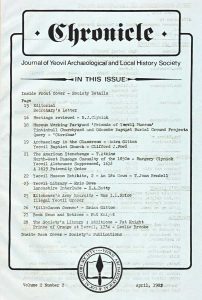1982-Apr_Miscellaneous
This article came from the Chronicle
Volume 2(2) published April 1982. Page ..
Miscellaneous
1. THE AMERICAN STONEHENGE
also
2. A NORTH-WEST PASSAGE CASUALTY OF THE 1850’s
Authors: 1. T.Atkins and 2. Margery Clynick
1. THE AMERICAN STONEHENGE (pg21)
T.Atkins
I In a letter from the Rev Norman Fletcher of Upper Montclair, New Jersey, USA, he refers, to an archaeological puzzle in the following extract: ‘We discovered in New Hampshire at North Salem what is called “Mystery Hill”, the American Stonehenge! Research and excavation, which has been going on since the early 1930’s, have brought to light some acres of stone artifacts and structures of astronomical and religious significance, which indicate there were people here in 2500 BC – long before the Indians – probably, so the inscriptions would indicate, from Iberia. One large stone is identified as a sacrificial table, another formation of stones is called “The tomb of Lost Souls”. A megalithic construction somewhat like the megalithic chambers in Europe, and still others. “The Winter Sunset” monolith, and the “Pole Star” monolith. What does this do to Christopher Columbus, or even to Amerigo Vespucci, or, for that matter, the Vikings? Recently there has been a book written about “Mystery Hill”.’
2. A NORTH-WEST PASSAGE CASUALTY OF THE 1850’s (pg21)
Margery Clynick
With the ‘Mary Rose’ catching the imagination of so many people, readers may be interested in another wreck, due,to be raised in the Spring. This is the ‘Breadalbane’, sent by Lady Franklin, and equipped by her, to search for her husband, Sir John Franklin, KCB, who was missing in a search, for the North-West Passage in the 1850s. The ship has been found beneath the ice, perfectly preserved, and the ship’s wheel and instruments all in place. She had on board silver cutlery, a 1200 book library, and a barrel organ but no warm clothing for the crew! She is in 330 feet of water, and a diving-bell and small submarine will be used in the rescue. The first clue to be found was of Eskimos using silver forks and spoons engraved with Sir John’s name, and skeletons with shreds of blue clothing. My great-grandfather was one of the crew – he was missing for seven years, but returned to England after living with Eskimos in Yukon. Sir John’s body, or grave, has never been found.
